Pololu 12V, 2.4A Step-Down Voltage Regulator D36V28F12
In stock, ships same business day if ordered before 2PM
Delivered by Tue, 6th of Jan
Quantity Discounts:
- 10+ $35.74 (exc GST)
- 25+ $34.62 (exc GST)
 |
 |
Step-Down Voltage Regulator D36V28Fx, assembled on breadboard. |
|---|
The D36V28Fx family of buck (step-down) voltage regulators generates lower output voltages from input voltages as high as 50 V. They are switching regulators (also called switched-mode power supplies (SMPS) or DC-to-DC converters), which makes them much more efficient than linear voltage regulators, especially when the difference between the input and output voltage is large. These regulators can typically support continuous output currents between 2 A and 4 A, depending on the input voltage and output voltage (see the Maximum continuous output current section below). In general, the available output current is a little higher for the lower-voltage versions than it is for the higher-voltage versions, and it decreases as the input voltage increases.
This family includes six versions with fixed output voltages ranging from 3.3 V to 12 V:
- D36V28F3: Fixed 3.3V output
- D36V28F5: Fixed 5V output
- D36V28F6: Fixed 6V output
- D36V28F7: Fixed 7.5V output
- D36V28F9: Fixed 9V output
- D36V28F12: Fixed 12V output
The regulators have reverse voltage protection up to 40 V, output undervoltage and overvoltage protection, over-current protection, and short-circuit protection. A thermal shutdown feature also helps prevent damage from overheating and a soft-start feature limits the inrush current and gradually ramps the output voltage on startup.
If you need more output current, consider the very similar D36V50Fx family of step-down voltage regulators.
Pololu manufacture these boards in-house at Pololu's Las Vegas facility, which gives Pololu the flexibility to make these regulators with customized components to better meet the needs of your project. For example, if you have an application where the input voltage will always be below 20 V and efficiency is very important, Pololu can make these regulators a bit more efficient at high loads by replacing the 40V reverse voltage protection MOSFET with a 20V one. Pololu can also customize the output voltage. If you are interested in customization, please contact us.
Details for item #3786
|
|
Features
- Input voltage: 12.9 V to 50 V (minimum input subject to dropout voltage considerations; see the dropout voltage section for details)
- Output voltage: 12 V with 4% accuracy
- Typical maximum continuous output current: 2 A to 3.3 A (see the maximum continuous output current graph below)
- Typical efficiency of 90% to 95%, depending on input voltage, output voltage, and load (see the efficiency graph below)
- Switching frequency: ~500 kHz under heavy loads
- Power-save mode with ultrasonic operation that increases light load efficiency by reducing switching frequency, but keeps it above the audible range (20 kHz)
- 1 mA to 3 mA typical no-load quiescent current (see the quiescent current graph below)
- Enable input with precise cutoff threshold for disconnecting the load and putting the regulator into a low-power state that draws approximately 10 µA to 20 µA per volt on VIN
- “Power good” output indicates when the regulator cannot adequately maintain the output voltage
- Output undervoltage and overvoltage protection
- Soft-start feature limits inrush current and gradually ramps output voltage
- Integrated reverse-voltage protection up to 40 V, over-current and short-circuit protection, over-temperature shutoff
- Compact size: 0.7" × 0.8" × 0.345" (17.8 mm × 20.3 mm × 8.8 mm)
- Two 0.086" mounting holes for #2 or M2 screws
Connections
 |
This regulator has six connections: power good (PG), enable (EN), input voltage (VIN), output voltage (VOUT), and two ground (GND) connections.
The “power good” indicator, PG, is an open-drain output that goes low when the regulator’s output voltage either rises more than 20% above or falls more than 10% below the nominal voltage (with hysteresis). An external pull-up resistor is required to use this pin.
The regulator, which is enabled by default, can be put into a low-power sleep state by reducing the voltage on the EN pin below 1.2 V, and it can be brought out of this state again by increasing the voltage on EN past 1.35 V. The quiescent current draw in this sleep mode is dominated by the current in the 100 kO pull-up resistor from ENABLE to VIN and in the reverse-voltage protection circuit, which altogether will be between 10 µA and 20 µA per volt on VIN. The tight tolerance of the enable input allows a precise low-VIN cutoff to be set, such as with the output of an external voltage divider powered by VIN, which is useful for battery powered applications where draining the battery below a particular voltage threshold could permanently damage it.
The input voltage, VIN, powers the regulator. Voltages up to 50 V can be applied to VIN. Generally, the effective lower limit of VIN is VOUT plus the regulator’s dropout voltage, which varies approximately linearly with the load (see below for graphs of the dropout voltage as a function of the load).
VOUT is the regulated output voltage.
 |
Step-Down Voltage Regulator D36V28Fx, with included hardware. |
|---|
The six connections are arranged on a 0.1" grid for compatibility with solderless breadboards, connectors, and other prototyping arrangements that use a 0.1" grid. The PG connection is the only one not located along the edge of the board. A 6×1 straight male header strip and a 5×1 right-angle male header strip are included with the regulator; one pin of the straight header can optionally be broken off and soldered into PG.
 |
Step-Down Voltage Regulator D36V28Fx, side view. |
|---|
Typical efficiency
The efficiency of a voltage regulator, defined as (Power out)/(Power in), is an important measure of its performance, especially when battery life or heat are concerns.
 |
Maximum continuous output current
The maximum achievable output current of these regulators varies with the input voltage but also depends on other factors, including the ambient temperature, air flow, and heat sinking. The graph below shows maximum output currents that these regulators can deliver continuously at room temperature in still air and without additional heat sinking.
 |
During normal operation, this product can get hot enough to burn you. Take care when handling this product or other components connected to it.
Quiescent current
The quiescent current is the current the regulator uses just to power itself, and the graph below shows this for the different regulator versions as a function of the input voltage. The module’s EN input can be driven low to put the board into a low-power state where it typically draws between 10 µA and 20 µA per volt on VIN.
 |
Typical dropout voltage
The dropout voltage of a step-down regulator is the minimum amount by which the input voltage must exceed the regulator’s target output voltage in order to ensure the target output can be achieved. For example, if a 5 V regulator has a 1 V dropout voltage, the input must be at least 6 V to ensure the output is the full 5 V. Generally speaking, the dropout voltage increases as the output current increases. The graph below shows the dropout voltages for the different members of this regulator family:
 |
People often buy this product together with:
 | Pololu 5V, 5A Step-Down Voltage Regulator D24V50F5 |
 | 5V, 3.2A Step-Down Voltage Regulator D36V28F5 |
 | 9V, 2.6A Step-Down Voltage Regulator D36V28F9 |
Dimensions
| Size: | 0.7" × 0.8" × 0.345"1 |
|---|---|
| Weight: | 3.3 g1 |
General specifications
| Minimum operating voltage: | 12.9 V2 |
|---|---|
| Maximum operating voltage: | 50 V |
| Continuous output current: | 2.4 A3 |
| Output voltage: | 12 V |
| Reverse voltage protection?: | Y4 |
| Maximum quiescent current: | 3 mA5 |
| Output type: | fixed 12V |
Identifying markings
| PCB dev codes: | reg24a, reg24g |
|---|---|
| Other PCB markings: | 0J11946, 0J13687 |
Notes:
- 1
- Without included optional headers.
- 2
- Subject to dropout voltage considerations. See the dropout voltage graph under the description tab for more information.
- 3
- Typical continuous output current at 36 V in. Actual achievable continuous output current is a function of input voltage and is limited by thermal dissipation. See the output current graph under the description tab for more information.
- 4
- To -40 V. Connecting supplies over 40 V in reverse can damage the device.
- 5
- While enabled with no load. Can be reduced to under 1 mA using the enable pin.
File downloads
-
Dimension diagram of the Step-Down Voltage Regulator D36V28Fx (306k pdf)
-
3D model of the Step-Down Voltage Regulator D36V28Fx (5MB step)
-
Drill guide for the Step-Down Voltage Regulator D36V28Fx (31k dxf)
This DXF drawing shows the locations of all of the board’s holes.
Exact shipping can be calculated on the view cart page (no login required).
Products that weigh more than 0.5 KG may cost more than what's shown (for example, test equipment, machines, >500mL liquids, etc).
We deliver Australia-wide with these options (depends on the final destination - you can get a quote on the view cart page):
- $3+ for Stamped Mail (typically 10+ business days, not tracked, only available on selected small items)
- $7+ for Standard Post (typically 6+ business days, tracked)
- $11+ for Express Post (typically 2+ business days, tracked)
- Pickup - Free! Only available to customers who live in the Newcastle region (must order online and only pickup after we email to notify you the order is ready). Orders placed after 2PM may not be ready until the following business day.
Non-metro addresses in WA, NT, SA & TAS can take 2+ days in addition to the above information.
Some batteries (such as LiPo) can't be shipped by Air. During checkout, Express Post and International Methods will not be an option if you have that type of battery in your shopping cart.
International Orders - the following rates are for New Zealand and will vary for other countries:
- $12+ for Pack and Track (3+ days, tracked)
- $16+ for Express International (2-5 days, tracked)
If you order lots of gear, the postage amount will increase based on the weight of your order.
Our physical address (here's a PDF which includes other key business details):
40 Aruma Place
Cardiff
NSW, 2285
Australia
Take a look at our customer service page if you have other questions such as "do we do purchase orders" (yes!) or "are prices GST inclusive" (yes they are!). We're here to help - get in touch with us to talk shop.
Have a product question? We're here to help!
Videos
View AllGuides
PiicoDev Magnetometer- Getting Started Guide
How to Drive High Power LEDs – 3W Aluminum Backed Star LEDs
The Maker Revolution
How to Use DC Regulators/Converters
Projects
Wireless QI Phone Charger Powered by Raspberry Pi
mmPi-Pico HAT
Solar Charging Station
Makers love reviews as much as you do, please follow this link to review the products you have purchased.


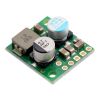
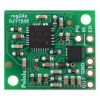
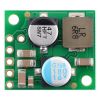









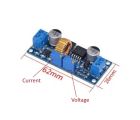
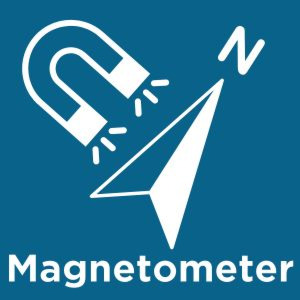
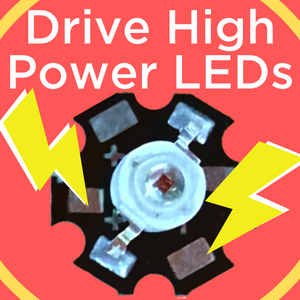


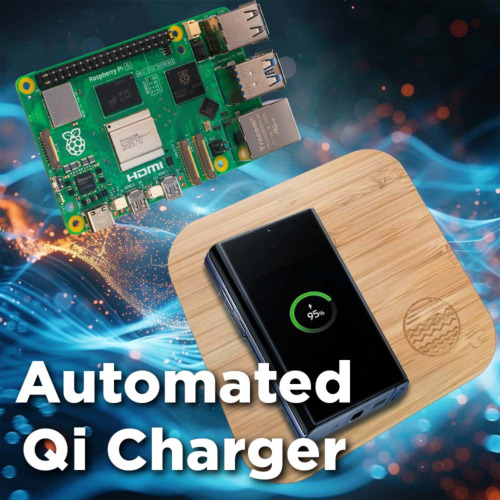
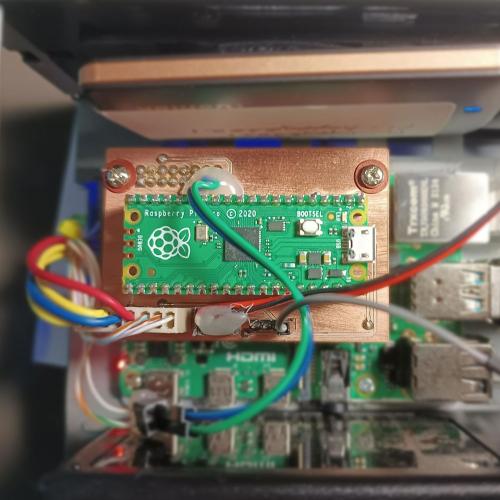


Product Comments